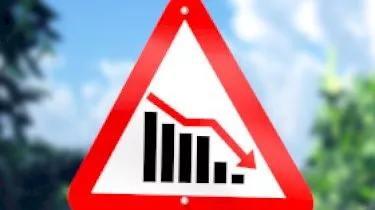Invest
Aussie growth predicted to weaken in mid-term
Investors are being told to brace themselves for tougher economic conditions, with annual growth forecast to drag as the Australian economy restructures following the mining boom.
Aussie growth predicted to weaken in mid-term
Investors are being told to brace themselves for tougher economic conditions, with annual growth forecast to drag as the Australian economy restructures following the mining boom.

Economic forecaster BIS Shrapnel expects GDP growth to ease to 2.8 per cent in the next 12 months, with weakened growth expected as the Australian economy transitions.
BIS Shrapnel senior economist Richard Robinson says that while households still hold a healthy cushion of savings to help offset weak wages and employment, annual GDP growth could slow to a low of 2.1 per cent in 2018-19.
“Growth will again weaken over the subsequent two years as mining investment continues to decline, as residential building runs out of steam and falls sharply, and as parts of non-dwelling building plateau. The main contributor to growth at that time will be rising public infrastructure investment,” Mr Robinson said.
“Accordingly, we expect employment growth to slow and households to react to slower jobs growth and weaker residential property prices by reeling in discretionary spending. Meanwhile, soft growth in output, wages, employment, and household incomes will continue to contain underlying inflation despite the fall in the dollar.”

However, BIS Shrapnel forecasts that this economic lull will be followed by a decade-long rebound, beginning with 3 per cent growth in 2019-20
BIS Shrapnel’s analysis found that the Australian economy has performed relatively well as it manages its transition away the mining boom.
“Australia was saved by the strengthening of growth in resources exports and production, albeit at lower prices. While domestic demand and incomes are still weak, production growth remains solid, softening the shock of the mining investment downturn,” it noted.
“Given the magnitude of the shocks we have to weather, this is a pretty good outcome.”
Central to this rebound will be the valuation of the Australian dollar returning to around 70 cents after a couple of years above parity to the greenback.
“The dollar is the key to Australia’s competitiveness. It’s not productivity growth or wage inflation that do the damage. Those influences are swamped by movements in the currency. Through the period of the mining boom, the resultant high dollar and its impact on competitiveness put enormous pressure on Australian export and import-competing industries,” Mr Robinson said.
“The 25 to 30 per cent fall in the Australian dollar over the past three years has helped competitiveness. It’s now low enough to stimulate recovery in some of the more competitive dollar-exposed industries, notably tourism and education services, and that will broaden.”

Property
New investment platform Arkus allows Australians to invest in property for just $1
In a groundbreaking move to democratise investment in property-backed mortgage funds, GPS Investment Fund Limited has launched Arkus™, a retail investment platform designed to make investing ...Read more

Property
Help to Buy goes live: What 40,000 new buyers mean for banks, builders and the bottom line
Australia’s Help to Buy has opened, lowering the deposit hurdle to 2 per cent and aiming to support up to 40,000 households over four years. That single policy lever will reverberate through mortgage ...Read more

Property
Australia’s mortgage knife‑fight: investors, first‑home buyers and the new rules of lender competition
The mortgage market is staying hot even as rate relief remains elusive, with investors and first‑home buyers chasing scarce stock and lenders fighting for share on price, speed and digital experienceRead more

Property
Breaking Australia’s three‑property ceiling: the finance‑first playbook for scalable portfolios
Most Australian investors don’t stall at three properties because they run out of ambition — they run out of borrowing capacity. The ceiling is a finance constraint disguised as an asset problem. The ...Read more

Property
Gen Z's secret weapon: Why their homebuying spree could flip Australia's housing market
A surprising share of younger Australians are preparing to buy despite affordability headwinds. One in three Gen Z Australians intend to purchase within a few years and 32 per cent say escaping rent ...Read more

Property
Tasmania’s pet-positive pivot: What landlords, BTR operators and insurers need to do now
Tasmania will soon require landlords to allow pets unless they can prove a valid reason to refuse. This is more than a tenancy tweak; it is a structural signal that the balance of power in rental ...Read more

Property
NSW underquoting crackdown: the compliance reset creating both cost and competitive edge
NSW is moving to sharply increase penalties for misleading price guides, including fines linked to agent commissions and maximum penalties up to $110,000. Behind the headlines sits a more ...Read more

Property
ANZ’s mortgage growth, profit slump: why volume without margin won’t pay the dividends
ANZ lifted home-lending volumes, yet profits fell under the weight of regulatory and restructuring costs—an object lesson in the futility of growth that doesn’t convert to margin and productivityRead more

Property
New investment platform Arkus allows Australians to invest in property for just $1
In a groundbreaking move to democratise investment in property-backed mortgage funds, GPS Investment Fund Limited has launched Arkus™, a retail investment platform designed to make investing ...Read more

Property
Help to Buy goes live: What 40,000 new buyers mean for banks, builders and the bottom line
Australia’s Help to Buy has opened, lowering the deposit hurdle to 2 per cent and aiming to support up to 40,000 households over four years. That single policy lever will reverberate through mortgage ...Read more

Property
Australia’s mortgage knife‑fight: investors, first‑home buyers and the new rules of lender competition
The mortgage market is staying hot even as rate relief remains elusive, with investors and first‑home buyers chasing scarce stock and lenders fighting for share on price, speed and digital experienceRead more

Property
Breaking Australia’s three‑property ceiling: the finance‑first playbook for scalable portfolios
Most Australian investors don’t stall at three properties because they run out of ambition — they run out of borrowing capacity. The ceiling is a finance constraint disguised as an asset problem. The ...Read more

Property
Gen Z's secret weapon: Why their homebuying spree could flip Australia's housing market
A surprising share of younger Australians are preparing to buy despite affordability headwinds. One in three Gen Z Australians intend to purchase within a few years and 32 per cent say escaping rent ...Read more

Property
Tasmania’s pet-positive pivot: What landlords, BTR operators and insurers need to do now
Tasmania will soon require landlords to allow pets unless they can prove a valid reason to refuse. This is more than a tenancy tweak; it is a structural signal that the balance of power in rental ...Read more

Property
NSW underquoting crackdown: the compliance reset creating both cost and competitive edge
NSW is moving to sharply increase penalties for misleading price guides, including fines linked to agent commissions and maximum penalties up to $110,000. Behind the headlines sits a more ...Read more

Property
ANZ’s mortgage growth, profit slump: why volume without margin won’t pay the dividends
ANZ lifted home-lending volumes, yet profits fell under the weight of regulatory and restructuring costs—an object lesson in the futility of growth that doesn’t convert to margin and productivityRead more








